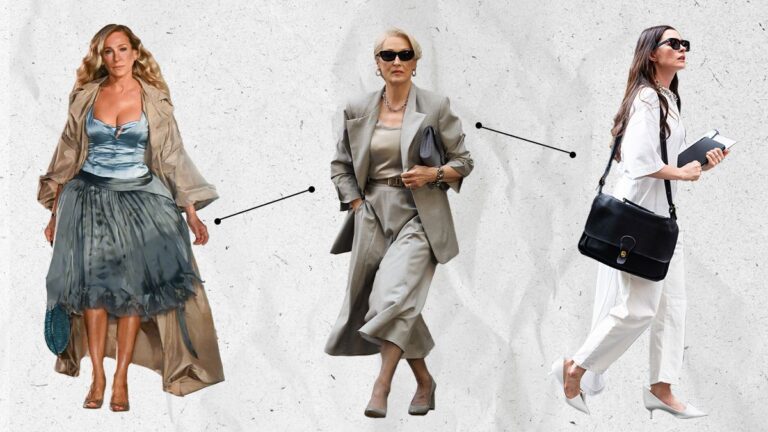Become a Vogue Business Member to receive unlimited access to Member-only reporting and insights, our Beauty and TikTok Trend Trackers, Member-only newsletters and exclusive event invitations.
“Is she wearing the…” The Jacquemus look, the Phoebe Philo shirt, the Chanel sandals? Yes, yes she is.
The long-awaited sequel to The Devil Wears Prada will hit US theatres on 1 May 2026, almost two decades after the release of the original film. And by the time we watch the movie, there will be few surprises on the fashion front. The internet has taken care of that.
Thanks to pervasive coverage of what’s happening on set, stills from upcoming movies and TV shows are all over our social media feeds. We know that Meryl Streep’s Miranda Priestly will be wearing Jacquemus and a piece from Julian Klausner’s first collection for Dries Van Noten. We know that Anne Hathaway’s Andy Sachs is carrying a Coach messenger bag and wearing Phoebe Philo. We also know that Emily Blunt will be wearing Dior as Emily Charlton, as indicated by the gigantic logo across the front of her T-shirt, which sits underneath a corset.
We also know that Ryan Murphy’s Carolyn Bessette-Kennedy was not carrying the right Birkin in those test shots, and that Margot Robbie’s wedding dress for the upcoming Wuthering Heights film was from the “wrong time period”, according to online armchair critics. Our feeds are full of potential spoilers months before a show or movie is released, exhausting our appetites well before we even see the final cut.
It’s not just plots being spoiled, it’s the fashion. When everyone can see the costume design splashed on social media beforehand, it invites commentary and criticism before a film or show can even speak for itself. For the brands involved, it’s more noise to contend with. Are brands the winners when it comes to their clothes being plastered all over social media, or does the intense level of exposure — and often criticisms of costume choices — overshadow the future on-screen moment?
Pros and cons of pre-release virality
Fashion being a silent but crucial character on TV and film is nothing new, but the way in which it has become part of the pop culture news cycle certainly is.


